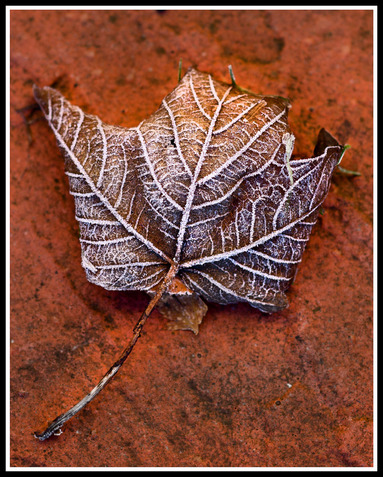Between Stockholm Syndrome and Lima Syndrome
Part 21: The Disembarkation Process

Talking about extinctions, according to Robert Hazen and Maxine Singer in Why Aren't Black Holes Black? (1997), more than 99 percent (by some estimates more than 99.9 percent) of all species that ever lived have vanished. In the worst Permian-Triassic mass extinction that occurred some 245 million years ago, as many as 96 percent of all living species are estimated to have vanished in a brief geological interval of less than a million years. This mass extinction eventually gave rise to the dinosaurs, albeit 'only' for the next 180 million years. Unfortunately, even dinosaurs had to go about 65 million years ago, when they went extinct after a giant meteorite crashed to Earth near the Gulf of Mexico. (Although some scientists disagree that this giant meteorite was a direct cause of dinosaurs extinction.) In any case, their extinction eventually spurred the rise of modern mammals (including humans) as outlined by John Roach for National Geographic News of June 20, 2007.
Indeed most of the species that have ever existed are now extinct—as argued by astrophysicist Carl Sagan (1934-1996) in Part 18 (Our Spatial and Temporal Insignificance in the Universe). Extinction is the norm, survival the exception. The first of the genus Homo appeared on Earth about four million years ago, and already half a dozen species of the genus are now extinct. If on a global level, deaths and mass extinctions are natural phenomena and simply unavoidable, then how 'natural' is death on a personal level?
In Book 2 of his timeless Meditations (translated by Gregory Hays), the Roman emperor philosopher Marcus Aurelius (121-180) poignantly described death as nothing but "a process of nature, which only children should be afraid of." In Book 3, he emphatically compared death to a disembarkation process, in which nobody—not even physicians, rulers, conquerors, philosophers—is immune to it:
"Hippocrates cured many illness—and then fell ill and died. The Chaldaeans predicted the deaths of many others; in due course their own hour arrived. Alexander, Pompey, Caesar—who utterly destroyed so many cities, cut down so many thousand foot and horse in battle—they too departed this life. Heraclitus often told us the world would end in fire. But it was moisture that carried him off; he died smeared with cow shit. Democritus was killed by ordinary vermin, Socrates by the human kind.
You boarded, you set sail, you have made the passage. Time to disembark. If it's for another life, well, there's nowhere without gods on that other side. If to nothingness, then you no longer have to put up with pain and pleasure, or go on dancing attendance on this battered crate, your body—so much inferior to that which serves it. One is mind and spirit, the other earth and garbage."
There is indeed no question that the death of a loved one, family member, or close friend, causes the deepest sorrow a human can ever experience. Throughout millennia, innumerable authors, philosophers, poets, and composers have written and composed countless works about death and mortality. Indeed death does not only mean an unbearable and irreversible loss; it also reminds one of his or her own mortality. This may explain the most intimate relationship between death and religion. When all is said and done, even hard-core atheists may have to agree that religion may be needed to assuage the fear of death. American essayist Gore Vidal (1925-2012) once said: "You need a religion if you are terrified of death." As has often been observed, one of the most important functions of religion is to comforts us to deal with hardships, tragedies, sickness and death. Therefore it's easy to see why Zoroastrianism tenets as outlined in Part 19 (No Religion is 100% Pure and Built from Scratch) regarding heaven and hell, afterlife, and the resurrection of the dead have always sounded so appealing and were swiftly embraced by Judaism, then Christianity and eventually Islam.
However, the fact that Abrahamic religions perceive the Big Things—live and death, body and soul, heaven and hell, rewards and punishment—in black and white polarities or dichotomies, does not mean that all religions are burdened by the same duality. Eastern religions like Buddhism and Taoism (some scholars even refuse to classify these as religions) apply a rather non-duality philosophy. Instead of black-and-white dichotomies, non-duality (literally meaning “not two” or “not separated”) is the belief that all things are basically interconnected in a holistic fashion, while at the same time retaining their individuality. Compare it with the tails and heads of a coin, if you will. Indeed Buddhism and Taoism do not talk about afterlife at all, much less promise anything about resurrection and heaven. Taoism even perceives the binary opposites of life and death as interconnected as yin and yang. Something does not exist without its opposite.
[To be continued.]
Johannes Tan, Indonesian Translator & Conference Interpreter
Indeed most of the species that have ever existed are now extinct—as argued by astrophysicist Carl Sagan (1934-1996) in Part 18 (Our Spatial and Temporal Insignificance in the Universe). Extinction is the norm, survival the exception. The first of the genus Homo appeared on Earth about four million years ago, and already half a dozen species of the genus are now extinct. If on a global level, deaths and mass extinctions are natural phenomena and simply unavoidable, then how 'natural' is death on a personal level?
In Book 2 of his timeless Meditations (translated by Gregory Hays), the Roman emperor philosopher Marcus Aurelius (121-180) poignantly described death as nothing but "a process of nature, which only children should be afraid of." In Book 3, he emphatically compared death to a disembarkation process, in which nobody—not even physicians, rulers, conquerors, philosophers—is immune to it:
"Hippocrates cured many illness—and then fell ill and died. The Chaldaeans predicted the deaths of many others; in due course their own hour arrived. Alexander, Pompey, Caesar—who utterly destroyed so many cities, cut down so many thousand foot and horse in battle—they too departed this life. Heraclitus often told us the world would end in fire. But it was moisture that carried him off; he died smeared with cow shit. Democritus was killed by ordinary vermin, Socrates by the human kind.
You boarded, you set sail, you have made the passage. Time to disembark. If it's for another life, well, there's nowhere without gods on that other side. If to nothingness, then you no longer have to put up with pain and pleasure, or go on dancing attendance on this battered crate, your body—so much inferior to that which serves it. One is mind and spirit, the other earth and garbage."
There is indeed no question that the death of a loved one, family member, or close friend, causes the deepest sorrow a human can ever experience. Throughout millennia, innumerable authors, philosophers, poets, and composers have written and composed countless works about death and mortality. Indeed death does not only mean an unbearable and irreversible loss; it also reminds one of his or her own mortality. This may explain the most intimate relationship between death and religion. When all is said and done, even hard-core atheists may have to agree that religion may be needed to assuage the fear of death. American essayist Gore Vidal (1925-2012) once said: "You need a religion if you are terrified of death." As has often been observed, one of the most important functions of religion is to comforts us to deal with hardships, tragedies, sickness and death. Therefore it's easy to see why Zoroastrianism tenets as outlined in Part 19 (No Religion is 100% Pure and Built from Scratch) regarding heaven and hell, afterlife, and the resurrection of the dead have always sounded so appealing and were swiftly embraced by Judaism, then Christianity and eventually Islam.
However, the fact that Abrahamic religions perceive the Big Things—live and death, body and soul, heaven and hell, rewards and punishment—in black and white polarities or dichotomies, does not mean that all religions are burdened by the same duality. Eastern religions like Buddhism and Taoism (some scholars even refuse to classify these as religions) apply a rather non-duality philosophy. Instead of black-and-white dichotomies, non-duality (literally meaning “not two” or “not separated”) is the belief that all things are basically interconnected in a holistic fashion, while at the same time retaining their individuality. Compare it with the tails and heads of a coin, if you will. Indeed Buddhism and Taoism do not talk about afterlife at all, much less promise anything about resurrection and heaven. Taoism even perceives the binary opposites of life and death as interconnected as yin and yang. Something does not exist without its opposite.
[To be continued.]
Johannes Tan, Indonesian Translator & Conference Interpreter

 RSS Feed
RSS Feed